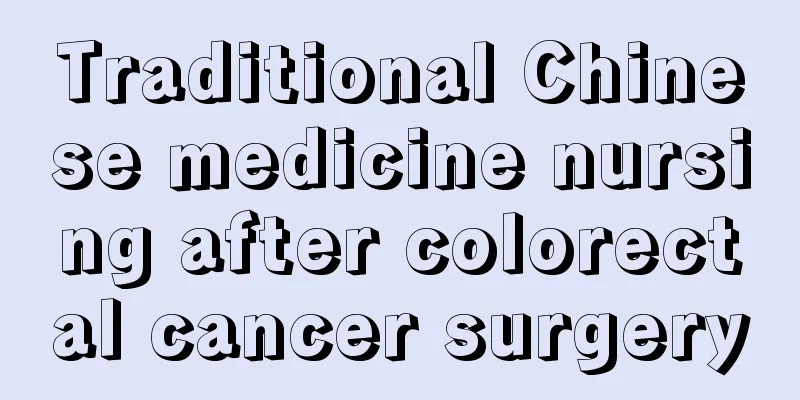What is the cause of gallbladder cancer?

|
Gallbladder cancer is divided into primary gallbladder cancer and secondary gallbladder cancer. The latter accounts for only a small part, mainly from the invasion and metastasis of digestive system tumors, and most of them do not invade the gallbladder mucosa. Primary symptoms are the main treatment, and surgery is the main treatment. The incidence of gallbladder cancer ranks sixth in the digestive tract, second only to gastric cancer, esophageal cancer, colorectal cancer, liver cancer and pancreatic cancer. But what are the causes of gallbladder cancer? 1. The relationship between cholelithiasis and gallbladder cancer. Patients with gallbladder cancer often have concurrent gallstones, with a combined rate of 70% to 80% in Europe and the United States, 58.8% in Japan, and 80% in my country. Gallbladder cancer often occurs in the neck of the gallbladder, which is easily hit by gallstones, and often occurs when the patient has had gallstones for more than 10 years, so it is believed that gallstones are closely related to gallbladder cancer. For patients with stones larger than 3 cm in diameter, the risk of gallbladder cancer is 10 times greater than for patients with stones smaller than 1 cm in diameter. Some people believe that gallstones contain carcinogenic factors, but there is a lack of definite evidence, and the incidence of gallbladder cancer in patients with cholelithiasis is only 1% to 2%. Therefore, whether there is a clear causal relationship between gallstones and gallbladder cancer is unclear. 2. The relationship between benign gallbladder polyps, adenomas and gallbladder cancer Sawyer reported 29 cases of benign gallbladder tumors, of which 4 were malignant. He reviewed the literature of the past 20 years and believed that gallbladder adenomas are precancerous lesions. Gallbladder adenomas are mostly solitary, pedunculated, and the canceration rate is about 10%. If combined with gallstones, the risk of canceration increases. Studies have found that those with a diameter of less than 12mm are mostly benign adenomas, while those with a diameter of more than 12mm are mostly malignant lesions. All carcinomas in situ and 19% of invasive carcinomas have adenomatous components, so it is believed that adenomas have the possibility of canceration. 3. The relationship between abnormal bile-pancreatic duct confluence and the incidence of gallbladder cancer Kinoshita and Nagata studied that when the common channel of the bile-pancreatic duct confluence exceeds 15mm, pancreaticobiliary reflux occurs, which is called abnormal bile-pancreatic confluence. Many authors have pointed out that abnormal bile-pancreatic duct confluence increases the incidence of gallbladder cancer. When the pancreaticobiliary duct confluence is malformed, the long-term reflux of pancreatic juice causes the gallbladder mucosa to be continuously destroyed and regenerated repeatedly, and cancer may occur in this process. It has been reported that ERCP examination found that 16% of patients with gallbladder cancer had combined pancreaticobiliary duct confluence malformation. Kimura et al. reported 96 cases of gallbladder cancer, which were confirmed by angiography in 65 cases of abnormal bile-pancreatic duct confluence. At the same time, 65 cases of abnormal bile-pancreatic confluence were observed, and 16.7% of them had combined gallbladder cancer. In the control group, 641 cases of normal bile-pancreatic duct confluence had a gallbladder cancer incidence of 8%. Another group reported that the incidence of gallbladder cancer was 25% in patients with abnormal bile-pancreatic duct confluence, and the incidence of gallbladder cancer was 1.9% in 635 cases in the normal confluence group. 4. Other factors In addition, Ritchie et al. reported that chronic ulcerative colitis is often associated with gallbladder cancer. The incidence of gallbladder cancer in patients with Mirizzi syndrome is increased, which may also be one of the causes. There are reports that the onset of gallbladder cancer is related to abnormalities of the cystic duct or congenital bile duct dilatation. The above are the causes of gallbladder cancer. Experts suggest: If you have symptoms of disease, you can choose the appropriate treatment according to your symptoms, but do not delay diagnosis, and do not let your life be ruined by hesitation. You should go to a regular hospital for treatment in time to avoid delaying the disease and causing serious consequences. If you have other questions, please consult our online experts or call for consultation. Believe in miracles, and wish you health, happiness, and joy! Gallbladder cancer http://www..com.cn/zhongliu/dna/ |
<<: Mid-stage symptoms of esophageal cancer
>>: Is there a link between dry stool and colorectal cancer?
Recommend
What are the symptoms of foot nerve damage
Every part of the human body is connected to nerv...
How to treat liver metastasis of thyroid cancer
When thyroid cancer metastasizes to the liver, it...
Is expanded polytetrafluoroethylene rhinoplasty good?
I believe that many people hope that their facial...
What disease is it that makes hair smell?
Each of us has smooth hair. Under normal circumst...
Root canal filling steps
Root canal filling is usually done at the tooth s...
You should know the three major signs of lung cancer
"What are the physical signs of lung cancer?...
What are the benefits of bleeding from the thumb
If oral ulcers occur in life, doctors will mostly...
What tests are needed to diagnose melanoma
After suffering from melanoma, there are some tes...
How is radiotherapy for liver cancer? What are the limitations of radiotherapy for liver cancer?
Since the early 1920s, foreign countries have beg...
The C-reactive protein was high throughout the whole process
We have an immune system in our body, and the imm...
What happens if you eat too much orchid beans
I don’t know if you have ever eaten orchid beans ...
How to make and clean mantis shrimp
If you want to eat a delicious meal of mantis shr...
Keep your mouth shut, move your legs, smile more and drink more water! 5 steps to keep you away from colorectal cancer!
According to the latest cancer data in China rele...
How to plug a tooth hole
Tooth holes are a common phenomenon in our daily ...
What are the hazards of sleeping on an electric heated kang
In recent years, many people choose to install el...









